Wastearn

Wastearn proposes a new waste management solution for the city of Barcelona, more specifically in the district of Sant Marti, to maximize the gain of value from the waste and to minimize the negative impacts caused by its management.
Waste, a global issue
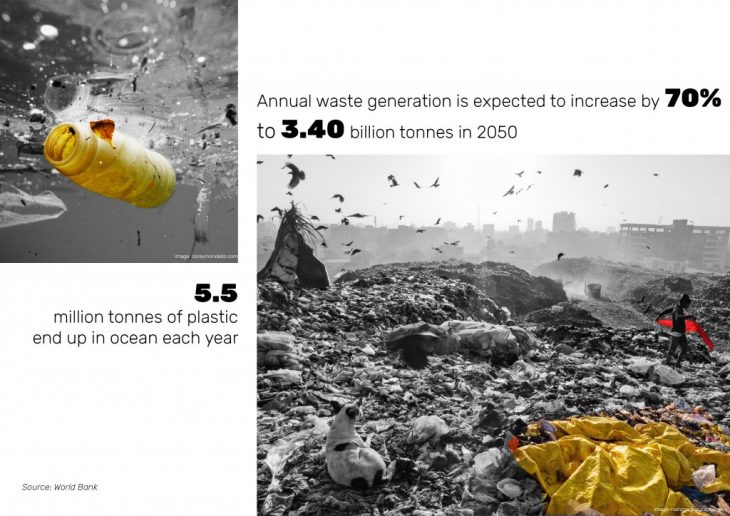
It is important to understand that waste is a serious global issue, not only because it is polluting our lands and seas but also because it is losing its value throughout the traditional management and recycling processes adapted by cities. Europe, for this matter, has lost 95% of the value of its waste in 2012.
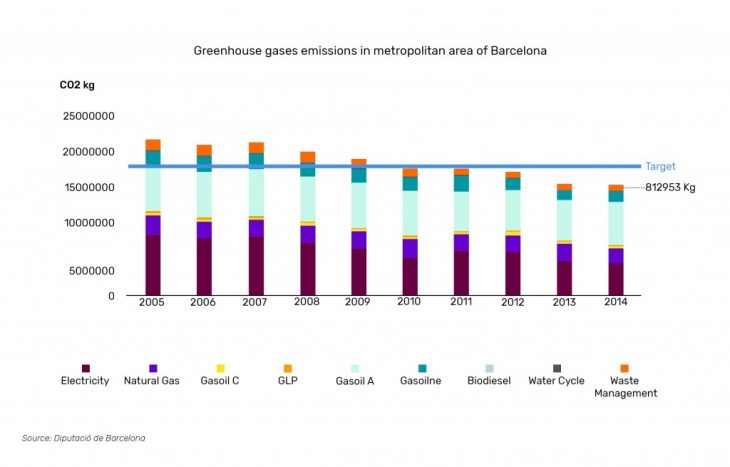
Waste management is a polluting process. This chart shows the greenhouse gas emissions in the metropolitan area of Barcelona. Waste management processes have emitted more than 812 Tonnes of Co2 in 2014.
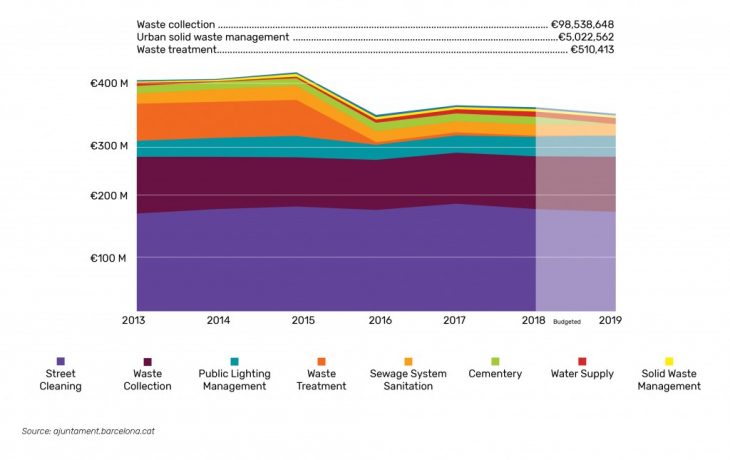
Waste management is also very costly. This chart shows all the expenses of the urban services in Barcelona. We can notice that waste collection is among the services with the highest budget. The city council spent more than 100 million euros for waste collection in 2018.
Redefining the role of buildings in waste management

The reason why this process is not very sustainable is that the cities are recycling their waste the same way, in a linear process, for the past 50 years. The resources are manufactured, transported in the city for consumption, and then waste is sent to landfills and power plants outside the city. Not only the process is harmful to the environment but also the value of waste gets lost.
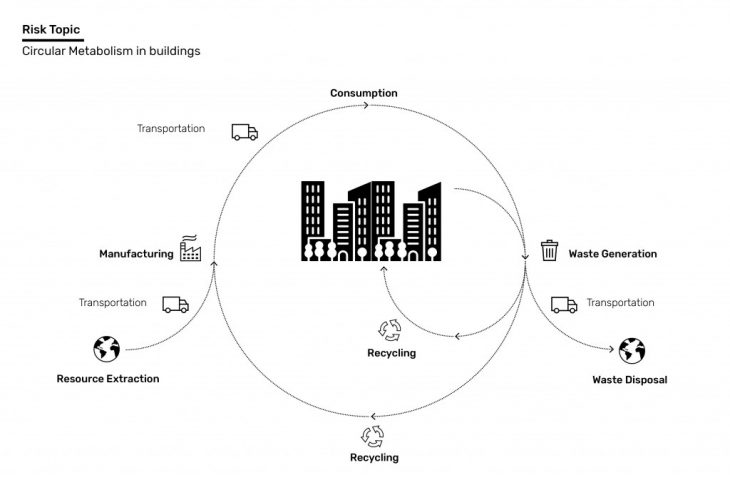
Changing this process into a circular metabolic system within the city is a solution to decrease the negative impacts in the environment of the cities, but the proposal for Wastearn is to apply this circular metabolism in the district scale. More specifically, within each building.
Waste Management in Barcelona
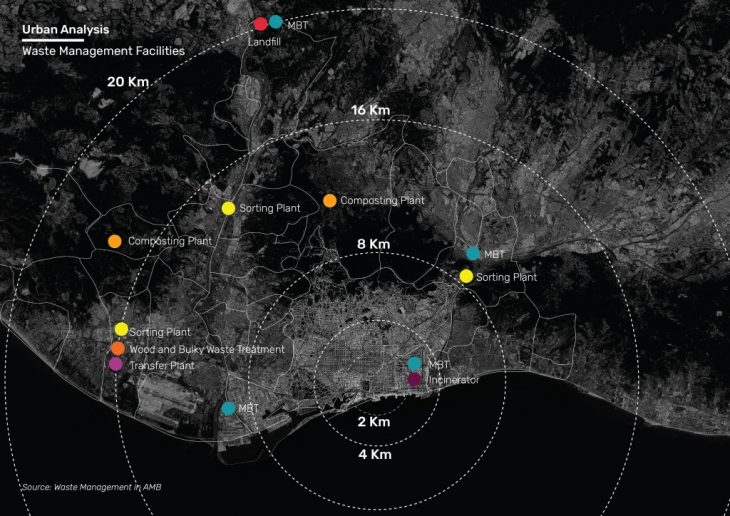
The waste generated from Sant Marti travels from 2 to 8 km for sorting and up to 20 km to reach the power plants and landfills. The municipal bins in the streets are the starting point in the management process. There are around 5000 bins in the district, occupying a total of 11000 m2 of space.
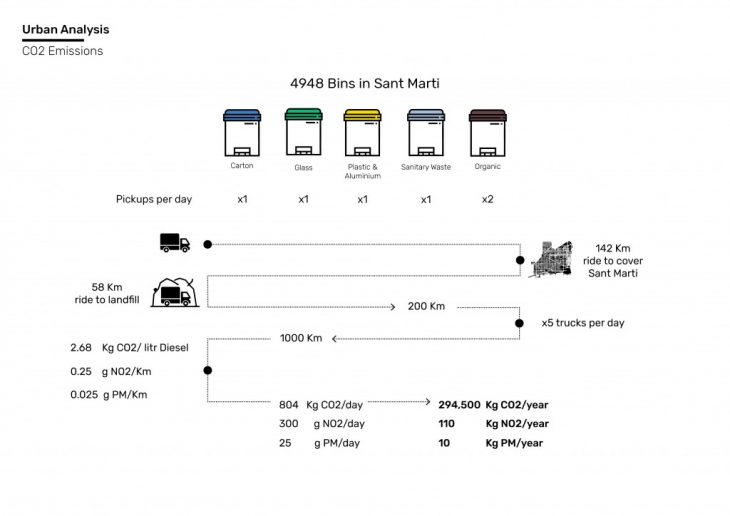 There are 5 different types of bins disposed in the streets. If there was one truck per category of the waste bin, it has to travel a total of 142 km per day to collect the waste and travel 58 km more to reach the landfills. Meaning that all the trucks travel a total of 1000 km to collect all the waste in Sant Marti and take them to landfills and power plants per day. Knowing the amount of ride, we calculated 300 000 kg of CO2 emission by these trucks per year.
There are 5 different types of bins disposed in the streets. If there was one truck per category of the waste bin, it has to travel a total of 142 km per day to collect the waste and travel 58 km more to reach the landfills. Meaning that all the trucks travel a total of 1000 km to collect all the waste in Sant Marti and take them to landfills and power plants per day. Knowing the amount of ride, we calculated 300 000 kg of CO2 emission by these trucks per year.
We deduce that 1.29 kg of waste is produced per capita in Barcelona. We also know from the statistics that 75% of the waste collected in the city comes from households, organic waste being the most produced waste, followed by other types, paper, plastic, and glass. Knowing the total number of inhabitants in Sant Marti, almost 305 tonnes of waste is generated by households every day. These numbers let us decide the typology of buildings we want to work with in the project.
Residential Buildings

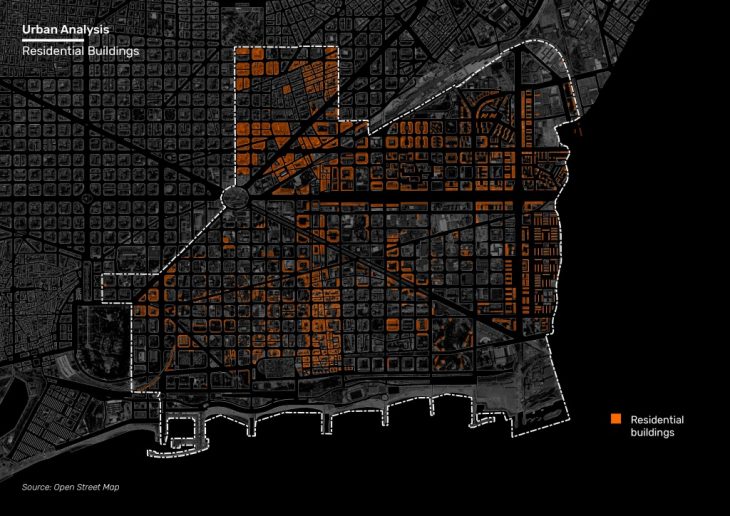
Spaces for Recycling in Buildings

Assuming that in the future there will be less cars and most of the underground spaces will be emptied, we looked at the underground spaces and mapped the residential buildings that have them, ranging from 0 to 4 levels.

Roofs are also spaces that can be used . Most of the residential buildings in Sant Marti have a flat roof.
Green Points
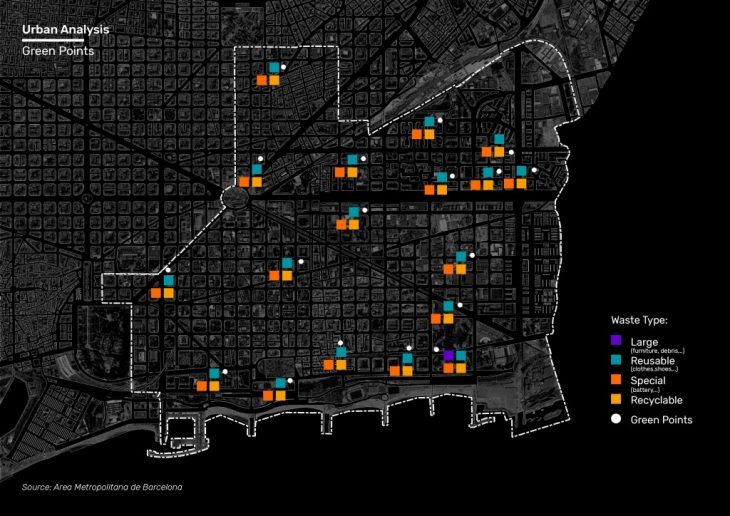
There are a total of 18 green points in the district. A green point is where you dispose the wastes that cannot be thrown into the street containers. All of them can receive recyclable, special, reusable waste.
System

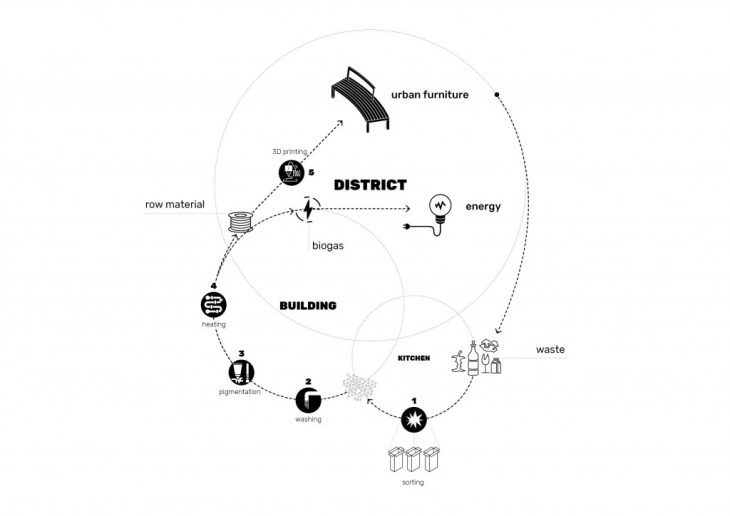
In Wastearn, the circular recycling system will be divided into different steps in 3 scales: kitchen, building, district. Waste produced in our households will start by being sorted in smart bins and then shredded. These waste go through the processes of recycling in the building scale (because we need space to recycle). We get two outcomes from this recycling process, one biogas production from organic waste and raw material from the rest of the waste. The raw material will be used to produce urban furniture in the district and biogas to produce energy. The material produced can be recycled again.
How can this system work?
The proposal is to have an automated structure in the voids of the buildings where the kitchens are allocated, an anaerobic digester on the roof for biogas production, small scale recycling and smart bins in the kitchens.
Once a bin is full, a height sensor will turn on to alert the structure to pick it up. The vertical rail collects the organic waste bin and takes in up to the roof to empty it in the digester. This technology is necessary to be placed on the roof since it needs heat from the sunlight to produce biogas. Other types of waste bins are taken in the underground for recycling since the underground spaces will be freed up.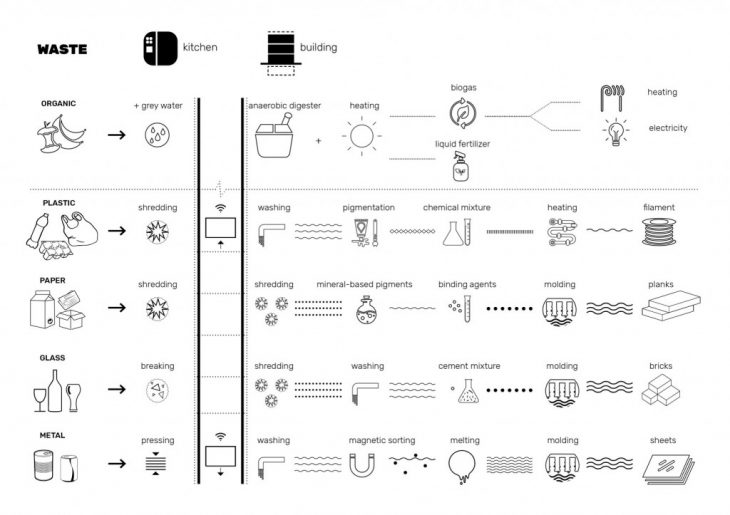
This diagrams summarizes the process of recycling for each type of waste. Only organic waste is recycled on the roof and the rest in the underground.
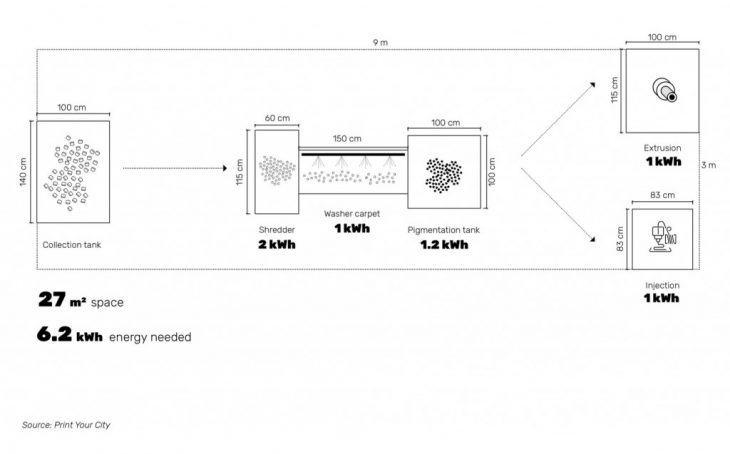
This is an example for the machinery, space and energy needed for the recycling of plastic in the underground.
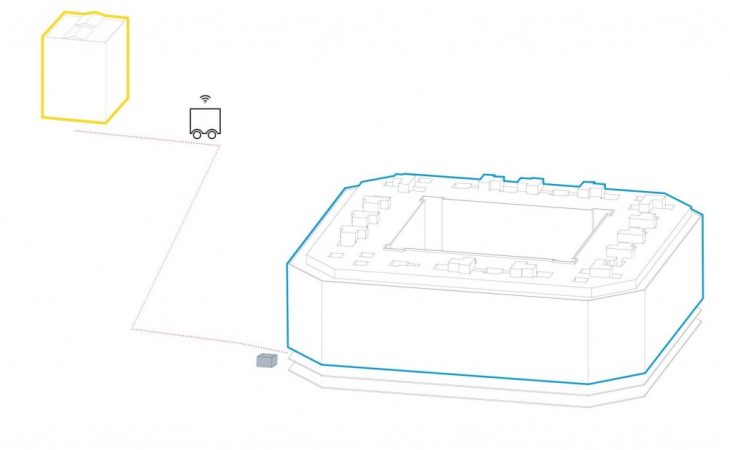
The buildings that do not have an underground space will have to send their smart bins through smart cars to the nearest residential building with underground space.

To understand the flow of waste in the district, we studied the different typologies of residential buildings. There are a total of 10 typologies categorized based on the availability of roof space, underground space and scale.
How does the network of buildings work?

We took the area of our interactive map to showcase the flow.
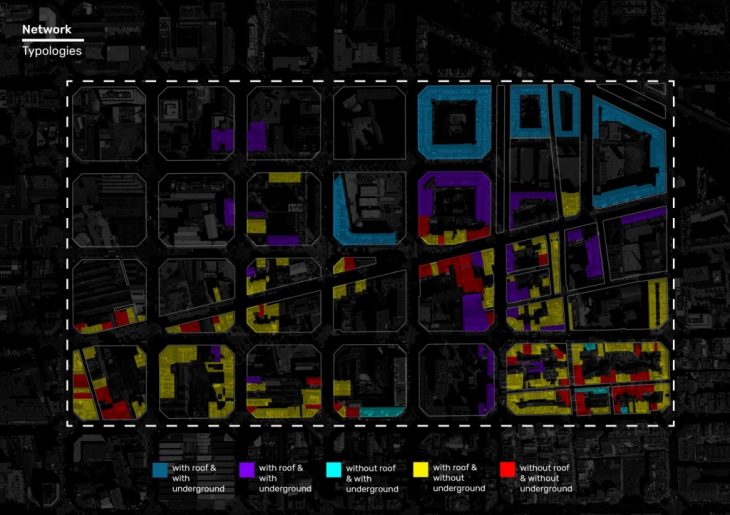
All the typologies of buildings.
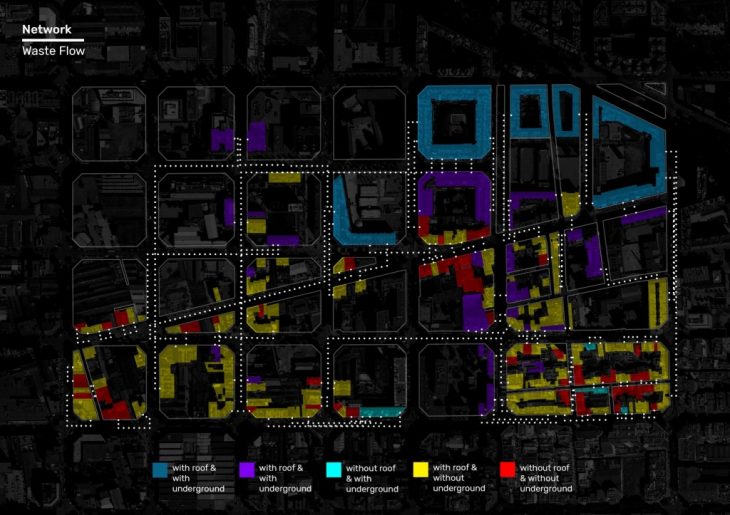
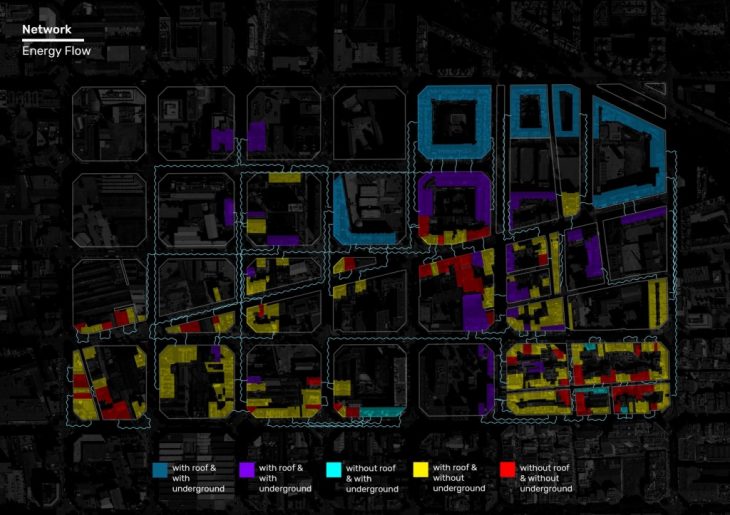
The network of waste flow and the energy flow distributed after the biogas production.
Let’s look at how building to building connection works :
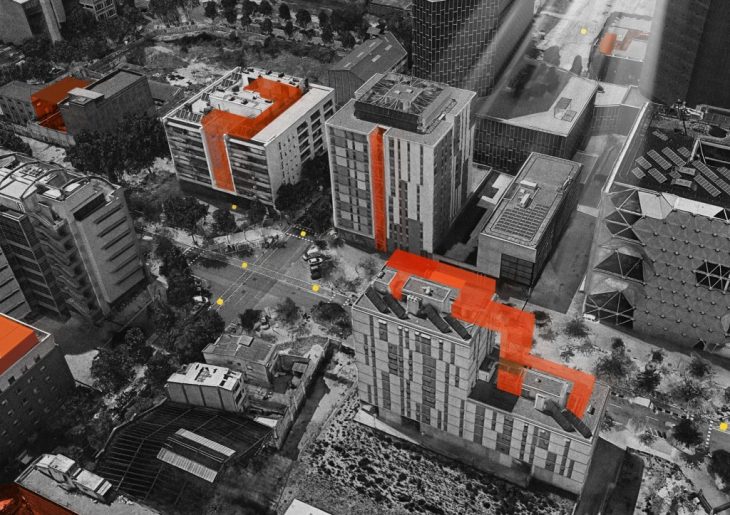
Values Created
With the total number of waste calculated per category and the different sources we looked at to see what we can produce, we were amazed by the outputs of it. We categorized all types of waste and their outputs in 3 different scale.
First the kitchen scale, the building and the district. Based on the givings of print your city company, one household can 3D print 3 public benches with they plastic waste produced per year. One building with 20 households can produce 60 and the district of Sant Marti can produce around 330 000 benches in one year.
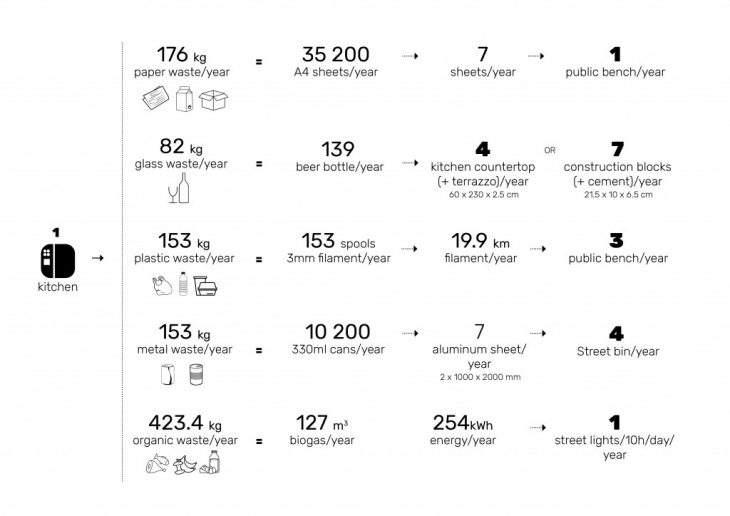
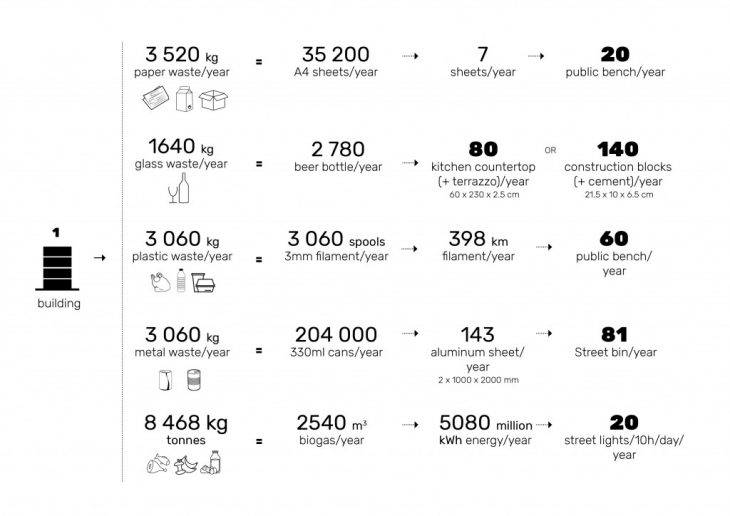
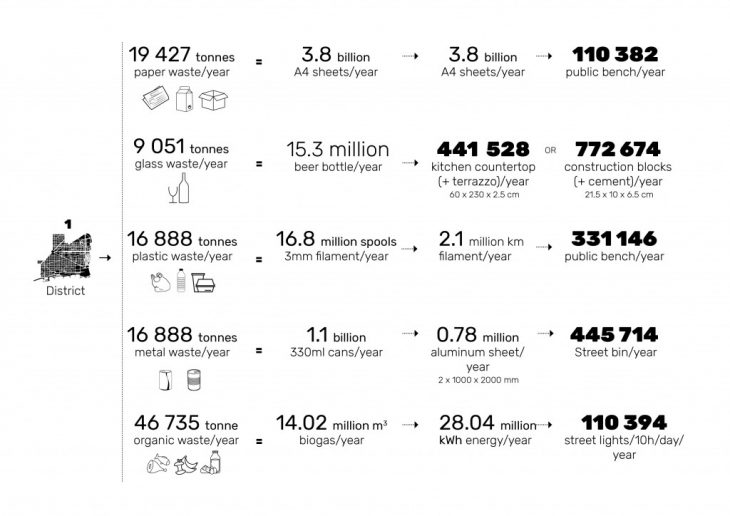
Impacts
By redefining the role of buildings, the recycling system in the district as well as developing a new network between them, for waste management, Wastearn’s impact of the urban ecosystem can be seen in three aspects: economic, social and environmental.
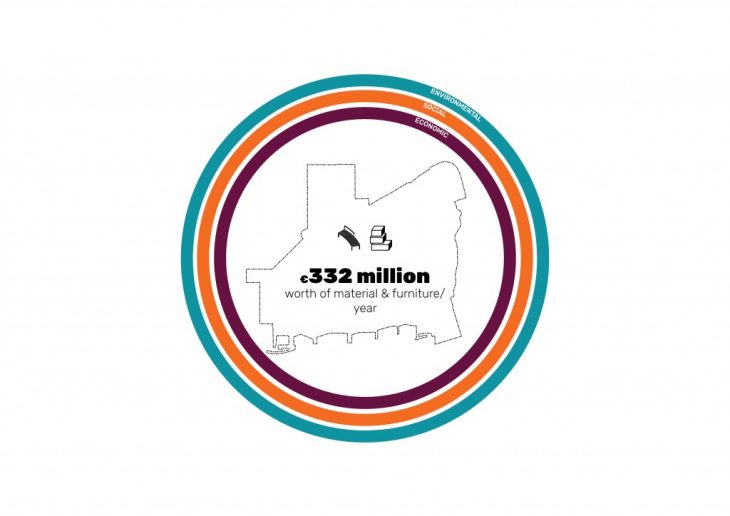
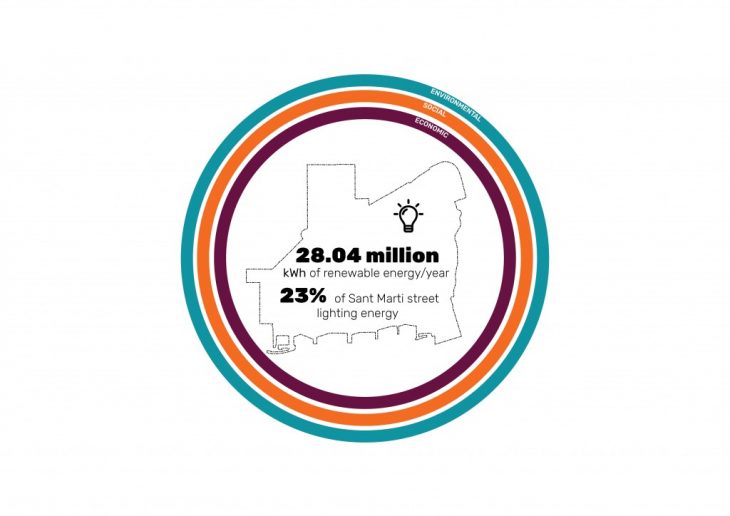
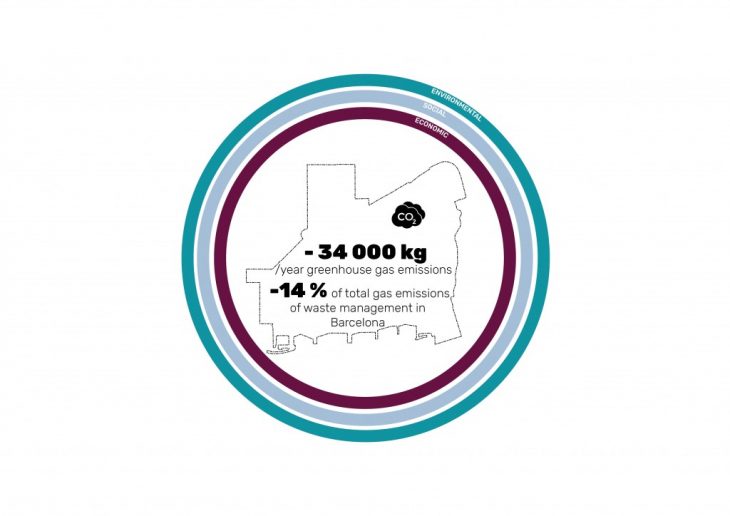
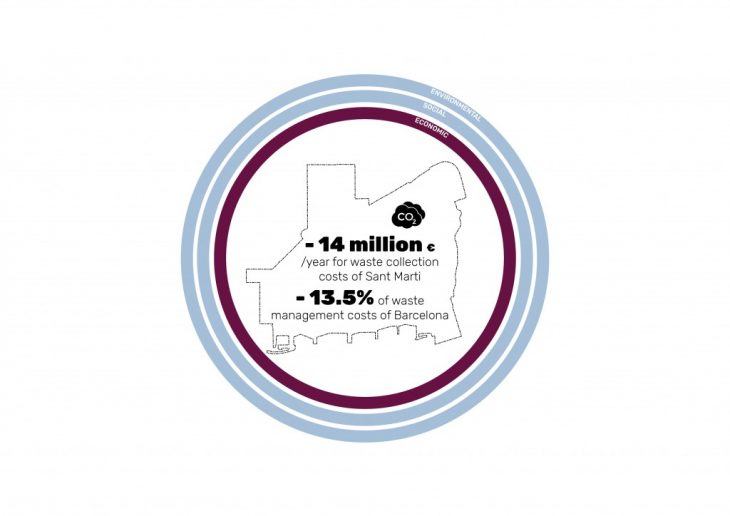
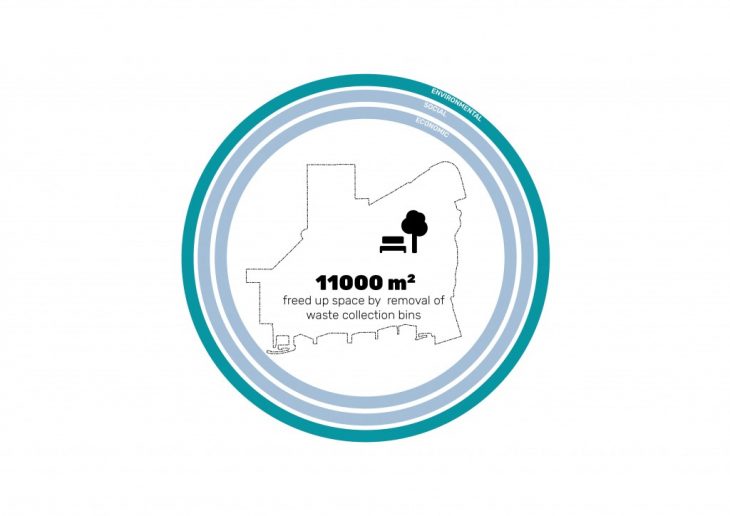
Wastearn is a project of IaaC, Institute for Advanced Architecture of Catalonia
developed at Master in City & Technology in (2018/2019) by:
Students: Sarine Bekarian, Mahsa Nikoufar, Maria Uporova
Faculty: Areti Markopoulou
Faculty Assistant: Alex Mademochoritis